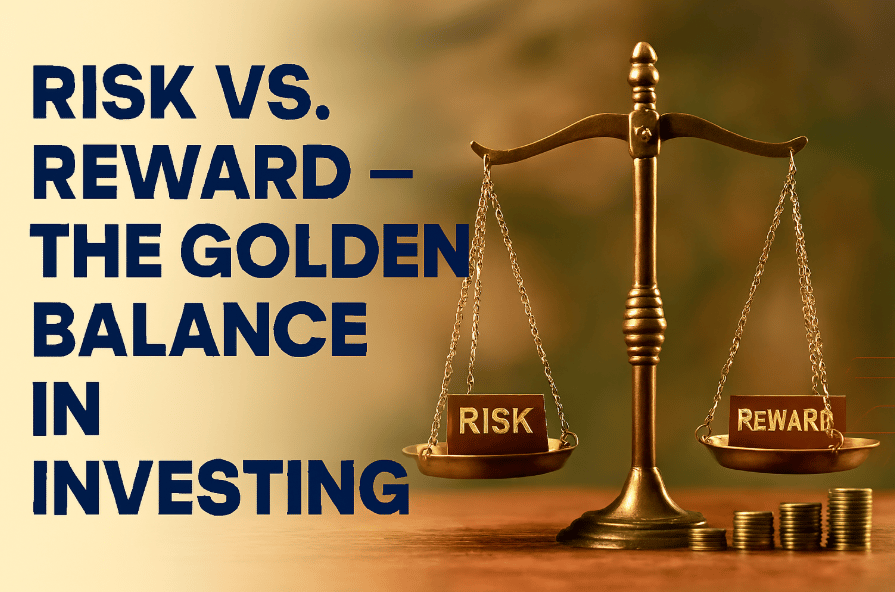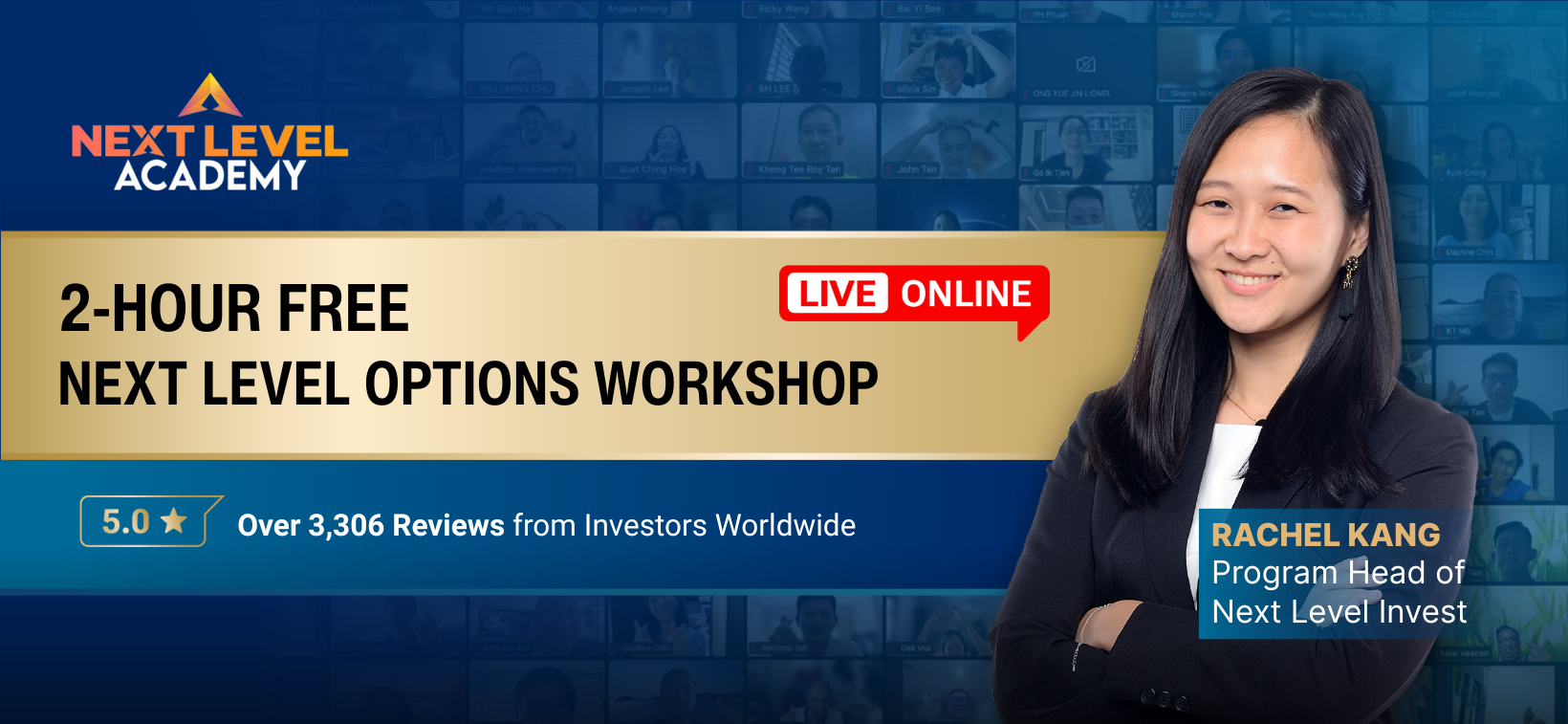- Live Life Grow Wealth
- Posts
- 📈Series 1 Day 3: Risk vs. Reward — The Golden Balance in Investing
📈Series 1 Day 3: Risk vs. Reward — The Golden Balance in Investing

Today’s Headline
📈 Series 1: Investing Foundations (Beginner-Friendly)
📊 Day 3: Risk vs. Reward — The Golden Balance in Investing
When I first started investing, I wanted all the reward with none of the risk. I hoped to find a magic investment that would give me high returns and zero chance of losing money.
Of course, I quickly learned that such a thing doesn’t exist. Every investment comes with some level of risk. And the potential reward you get usually matches the level of risk you take.
The real secret isn’t to avoid risk—it’s to manage it. That’s what we’ll talk about today: finding the golden balance between risk and reward.
If you're serious about growing wealth through passive income, this might be the most valuable email you ever sign up for.
📈 Stocks & Income is a powerful free newsletter that delivers dividend-paying stocks, high-yield ideas, and income opportunities — all in plain English.
The best part? You get it straight in your inbox, before the masses even hear about it.
If you're not reading this, chances are… you’re leaving serious money on the table. 😬
👉 Click here to subscribe now — before your next stock payout slips away
Stop Drowning in Market News. Focus On Making Money.
Every day: 847 financial headlines, 2,300 Reddit stock mentions, 156 Twitter trading threads, 12 IPO updates, 94 crypto developments.
Your problem isn't lack of information; you have too much.
While you're scanning headlines wondering what matters, profitable trades slip by. The signal gets buried in noise.
What if someone did the heavy lifting for you?
Stocks & Income reads everything:
Twitter traders
Reddit buzz
IPO announcements
Crypto insider takes
Crowdfunding opportunities
Market news
Then we send you only what can actually move your portfolio.
No fluff. No useless news. Just actionable stock insights in 5 minutes.
We track every source so you don't have to. You get the 3-5 opportunities worth your time, delivered daily.
Stop wasting time on useless “investing news” and start thinking critically about real opportunities in the stock market.
Stocks & Income is for informational purposes only and is not intended to be used as investment advice. Do your own research.
Why Risk Scares Us
Risk is simply the possibility of losing money. For most people, that’s scary. We work hard for our money, and the thought of seeing it shrink in value can be painful.
I’ve felt that fear too. Watching your investment dip can make you want to pull out right away. But here’s the truth: without taking on some risk, you can’t expect meaningful rewards.
Think about it—if an investment were 100% safe, everyone would rush to it. But because it’s safe, the return is usually tiny.
Understanding Reward
Reward is the potential gain you get from an investment. It’s the upside—the reason you invest in the first place.
Higher-risk investments often come with higher potential rewards. Lower-risk ones offer smaller but steadier returns.
It’s like choosing between a roller coaster and a carousel. The roller coaster is thrilling, but it’s risky. The carousel is slow and safe, but you won’t get the same excitement.
The Risk-Reward Trade-Off
Here’s a simple truth: the higher the potential reward, the higher the risk.
A savings account has almost no risk, but the reward (interest) is tiny.
Stocks can give you high returns, but they can also drop in value.
Bonds sit somewhere in between—lower risk than stocks, but also lower reward.
The golden balance is about deciding how much risk you’re willing to accept for the reward you want.
A Real-Life Example
Imagine two friends, John and Sarah.
John keeps all his money in a savings account. It feels safe, but after 20 years, inflation eats away at his purchasing power.
Sarah invests in a mix of stocks and bonds. Her portfolio goes up and down, but over 20 years, her wealth grows far more than John’s.
Neither is wrong—it depends on what they value more: safety or growth. But Sarah found a balance that allowed her to take on some risk for greater long-term reward.
Types of Risk in Investing
Not all risks are the same. Here are a few you’ll face:
Market Risk – The chance that the market goes down, affecting your investments.
Inflation Risk – The danger that your money loses value over time if it doesn’t grow fast enough.
Liquidity Risk – Not being able to access your money quickly when you need it.
Business Risk – If you invest in a single company, it could fail or underperform.
Interest Rate Risk – Changes in interest rates can affect bonds and other fixed-income investments.
Knowing these risks helps you make smarter choices.
Finding Your Risk Tolerance
Risk tolerance is how comfortable you are with ups and downs in your investments. Everyone is different.
Some people lose sleep over small losses.
Others don’t mind big swings if they believe in the long-term reward.
Ask yourself:
How would I feel if my investment dropped 20% tomorrow?
Would I panic and sell, or would I stay calm and wait it out?
Your honest answers will guide your balance between risk and reward.
The Role of Age
Age plays a big role in how much risk you can take.
When you’re young, you have more time to recover from losses. That means you can take more risk for higher rewards.
As you get closer to retirement, you’ll want to protect what you’ve built. That means shifting toward safer, lower-risk investments.
It’s not just about personality—it’s also about the stage of life you’re in.
Diversification: Your Best Tool
One of the smartest ways to balance risk and reward is diversification.
That means spreading your money across different types of investments—stocks, bonds, real estate, and even cash.
It’s like not putting all your eggs in one basket. If one basket drops, you don’t lose everything.
Diversification doesn’t remove risk completely, but it helps reduce the impact of any single investment going wrong.
Short-Term vs. Long-Term
Risk feels very different depending on the time frame.
In the short term, markets can be volatile. Prices swing up and down daily. That feels risky.
But in the long term, the ups and downs tend to smooth out. Historically, long-term investors in broad stock markets have seen growth despite short-term drops.
That’s why it’s easier to balance risk and reward if you commit to a long-term view.
How I Personally Balance Risk
Here’s how I approach it in my own investing:
Emergency Fund First – I keep 3–6 months of expenses in savings. This keeps me safe from unexpected surprises.
Long-Term Investments – I invest in a mix of stocks and bonds. The exact mix depends on my goals and time frame.
Avoiding Gambling – I don’t chase “get rich quick” schemes. If the reward looks too good to be true, it probably is.
Regular Check-Ins – I review my investments once or twice a year to make sure the risk level still fits my life stage.
This balance keeps me both secure and growing.
Common Mistakes People Make
Here are some traps to avoid:
Chasing only high returns. People jump into risky investments without understanding the downside.
Being too safe. Others keep all their money in savings and lose out to inflation.
Panicking during downturns. Selling at the bottom locks in losses.
Not diversifying. Putting everything into one stock or one idea can backfire badly.
Learning to avoid these mistakes will save you years of frustration.
A Story That Stuck With Me
I once met a man who lost half his wealth because he put almost everything into one “hot stock.” When the company crashed, so did his dreams of early retirement.
He told me, “I was blinded by the reward and ignored the risk.”
That lesson hit me hard. Chasing reward without respecting risk is like walking a tightrope without a safety net.
The Golden Balance
The golden balance isn’t about removing risk—it’s about choosing the right level of risk for the reward you want.
Think of it like seasoning food. Too much spice, and it’s overwhelming. Too little, and it’s bland. The right balance makes it enjoyable.
In investing, the right balance gives you both peace of mind and meaningful growth.
My Advice to You
Don’t fear risk—respect it.
Match your investments to your goals. Short-term goals need safer investments. Long-term goals can handle more risk.
Stay consistent. Don’t let emotions drive your decisions.
Think in decades, not days. Wealth grows over time, not overnight.
If you follow these principles, you’ll find a balance that works for you.
Final Takeaways
Risk and reward are two sides of the same coin. You can’t have one without the other.
The key isn’t to avoid risk—it’s to manage it wisely. With the right balance, you can protect yourself from big losses while still giving your money the chance to grow.
Remember this: the best investors aren’t the ones who take the biggest risks, but the ones who find the right balance for their goals.
Call to Action
Here’s what I want you to do today:
Take a sheet of paper and draw two columns. In one, write your short-term goals (1–3 years). In the other, write your long-term goals (5–20 years).
Ask yourself:
Which of these goals need safety?
Which of these can handle more risk for greater reward?
This simple exercise will help you see where to play it safe and where to let your money grow.
Finding your golden balance is the first step toward investing with confidence and peace of mind.
[Live Life Grow Wealth]
🎓 Free Masterclasses to Unlock Your Investment Potential
Take your money skills to the next level with expert-led workshops designed to help you grow smarter and faster.

Recommendations Section
|
|
|
|
DISCLAIMER
I make no representations, warranties, or guarantees, whether expressed or implied, that the content provided is accurate, complete, or up-to-date. Past performance is not indicative nor a guarantee of future returns.
I am an individual content creator and not regulated or licensed by the Monetary Authority of Singapore (MAS) as I do not provide investment services.
All forms of investments carry risks, including the risk of losing your entire invested amount. Such activities may not be suitable for everyone. You are strongly encouraged to seek advice from a professional financial advisor if you have any doubts or concerns.








